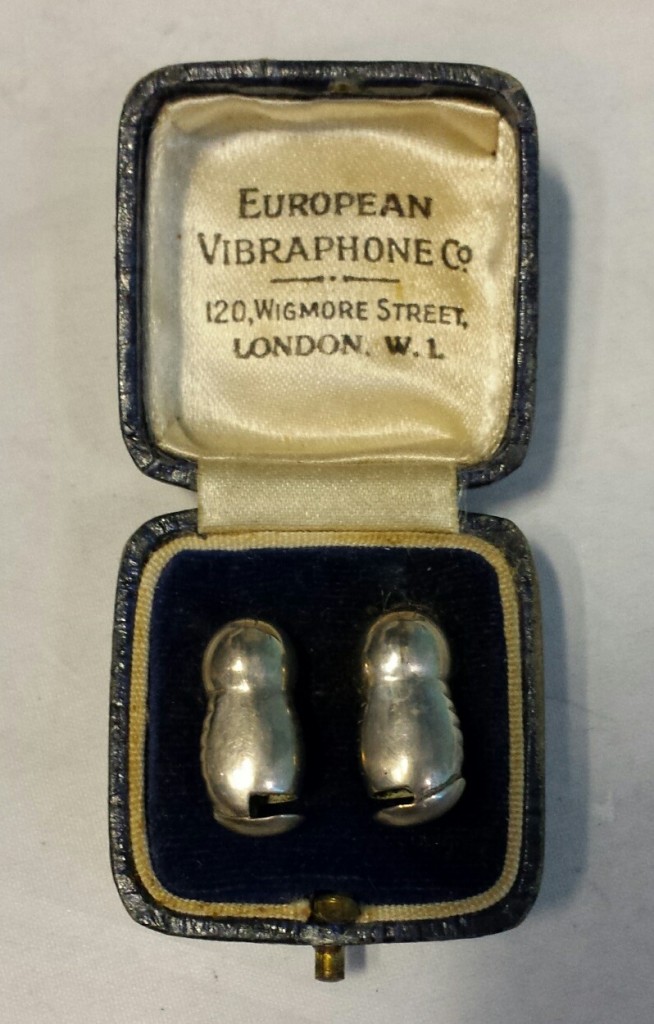 Going back in time: hearing aids through the decades
Going back in time: hearing aids through the decades
In March this year, just a few weeks into our project ‘Hearing aids for music’, the project team visited the Thackray Medical Museum in Leeds.
We wanted to learn something about the history of hearing aids from the important collection of amplification and audiology equipment housed there.
But we also had another agenda… We wanted to see if there was any evidence in the collection of hearing aids having been used to amplify music – not just speech.
We saw examples of older styles of hearing aid used before electronic devices were introduced. These included hearing trumpets in some very creative designs. Some were even made into pieces of furniture such as the ‘Acoustic Chair’.

‘Vibrophones’ were early hearing aids made of metal, containing a sound chamber and two tiny metal reeds (see picture). There is little evidence however that they actually amplified any sound and are a good example of the hearing aid ‘quackery’ prevalent in the pre-war decades.
We also saw early models of ‘Medresco’ hearing aids, which were the trademark NHS hearing aids, launched (not entirely successfully!) in 1948. Lots of people reported problems and commercial firms then started capitalising on the public demand with their own technology.
The collection houses the first ever NHS Medresco Audiometer which was designed to test and calibrate the hearing aids. It’s interesting to think about the role the NHS had in creating the idea of ‘non-normal’ hearing in the 40s, 50s and 60s. Or at least quantifying it!
But what about music?
Were hearing aids used to listen to music?
Sadly, we found little evidence in the collection to suggest that they were. But we did find evidence that musical contexts were used to sell hearing aids, both in the design of the hearing aids themselves and in the advertisements used to promote them.

For example, one design of women’s hearing aid was called the ‘Opera Comb’. This hearing aid was worn in the hair as a decorative hair clip to so that she could hear the opera while still looking her best! There was also a men’s hearing aid to be worn in the beard.
The Thackray Medical Museum houses a lot more besides hearing aids. We were very grateful to Alan Humphries for introducing us to the collection and allowing us to behind the scenes.
We’d like to collect examples or stories of hearing aids being used or designed for listening to music.
If you know of any, please email me at r.j.fulford@leeds.ac.uk.
RF